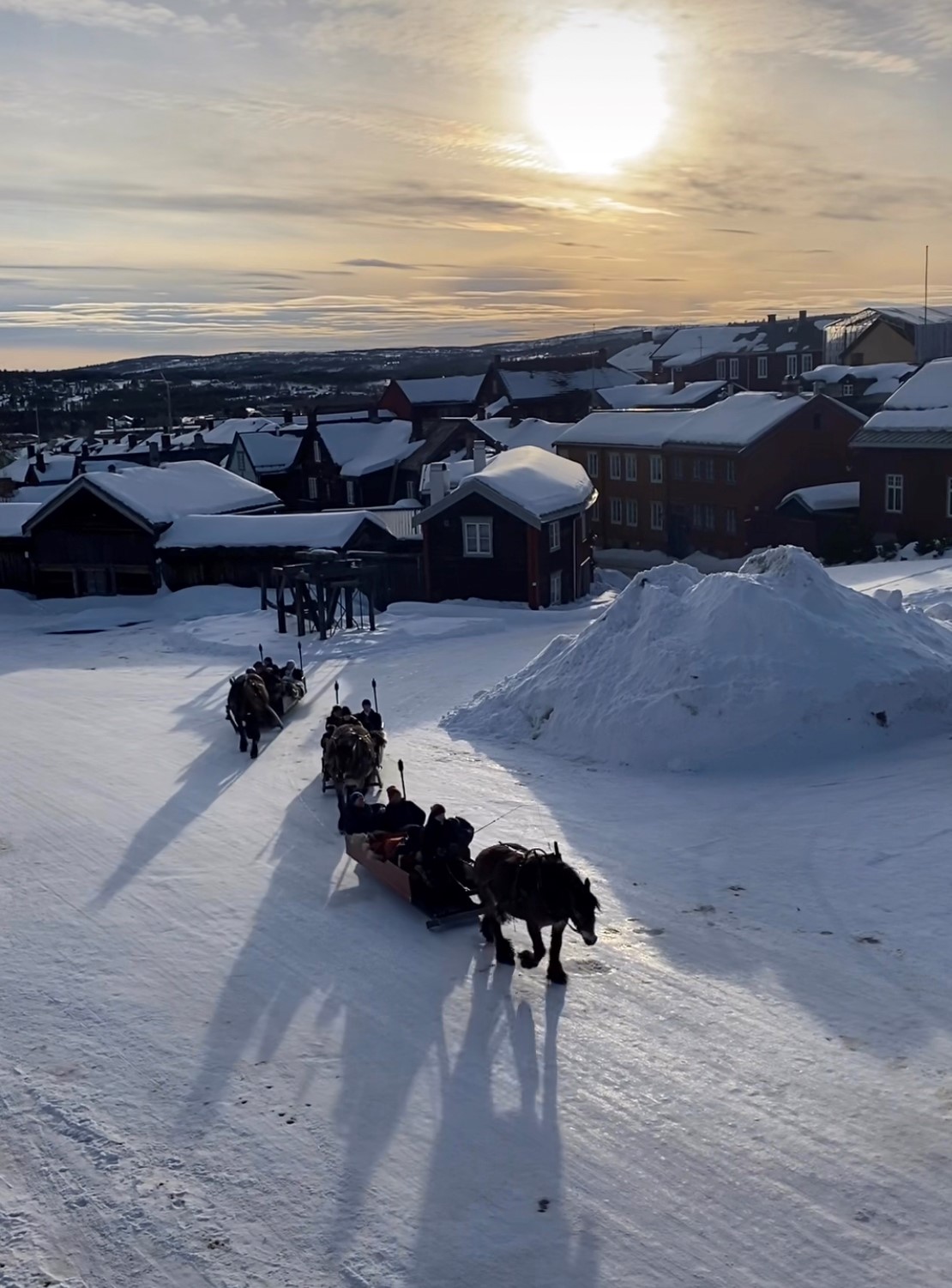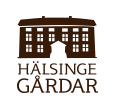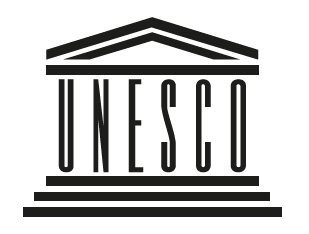Nordic World Heritage VR-Network becomes Norwegians 21 – 23 march 2023
-
-
- Röros 2023
The fourth VR-Network conference was in beautiful Röros, for this occation in a charming small World Heritage town embedded in snow. It was amazing to drive in to the little city and the expectations were high as the members gathered in front of the Röros museum to go down into Olavs mine. The excitment of the programme was big and may I say, all expectations were fulfilled as the entire conference was very very successful.
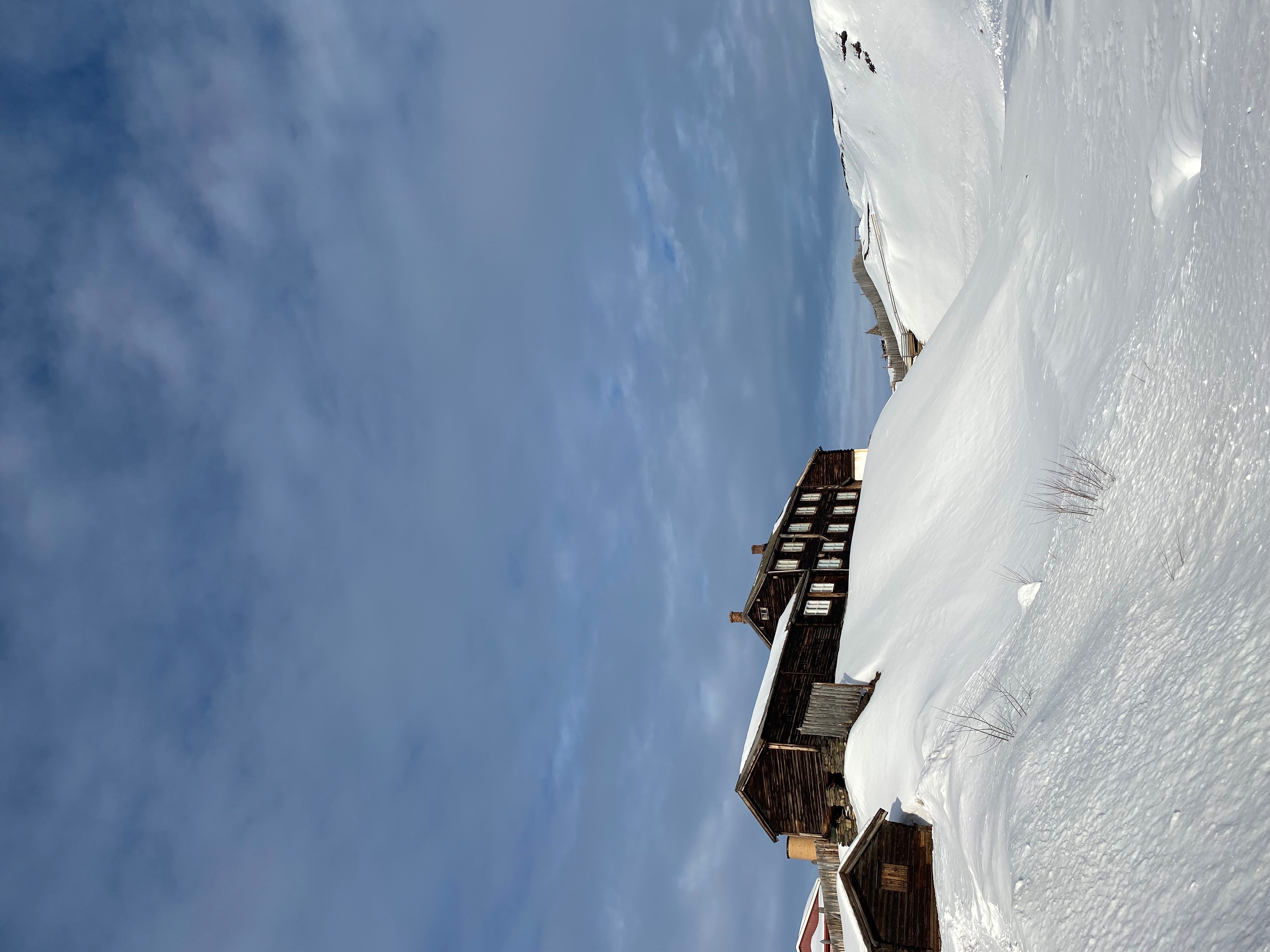
On arrival the network participants boarded a bus headed for the heart of the world heritage – Olavs mine. The tour starts in the exibition on top of the mine’s entrance. The exibition gives insight in geology and mining, focusing on methods aswell as social conditions and working environment for the empoyees of the mine. Its a humbeling experience to descent into the mine. It is not very deep – but vast and with a chronology guiding us through how mining changed through the mines almost 400 years of history. The entrance showing methods from the 1600:s and down to the hall of Olav where mining stoped in 1972.
The visit at Olavs mine ended up in the museum were everbody got a guided tour. The parts of the exhibition with small figures and models were absolutely fascinating and triggered the participants' imaginations to what it might have been like to work in a mine and smelter back in the old days.
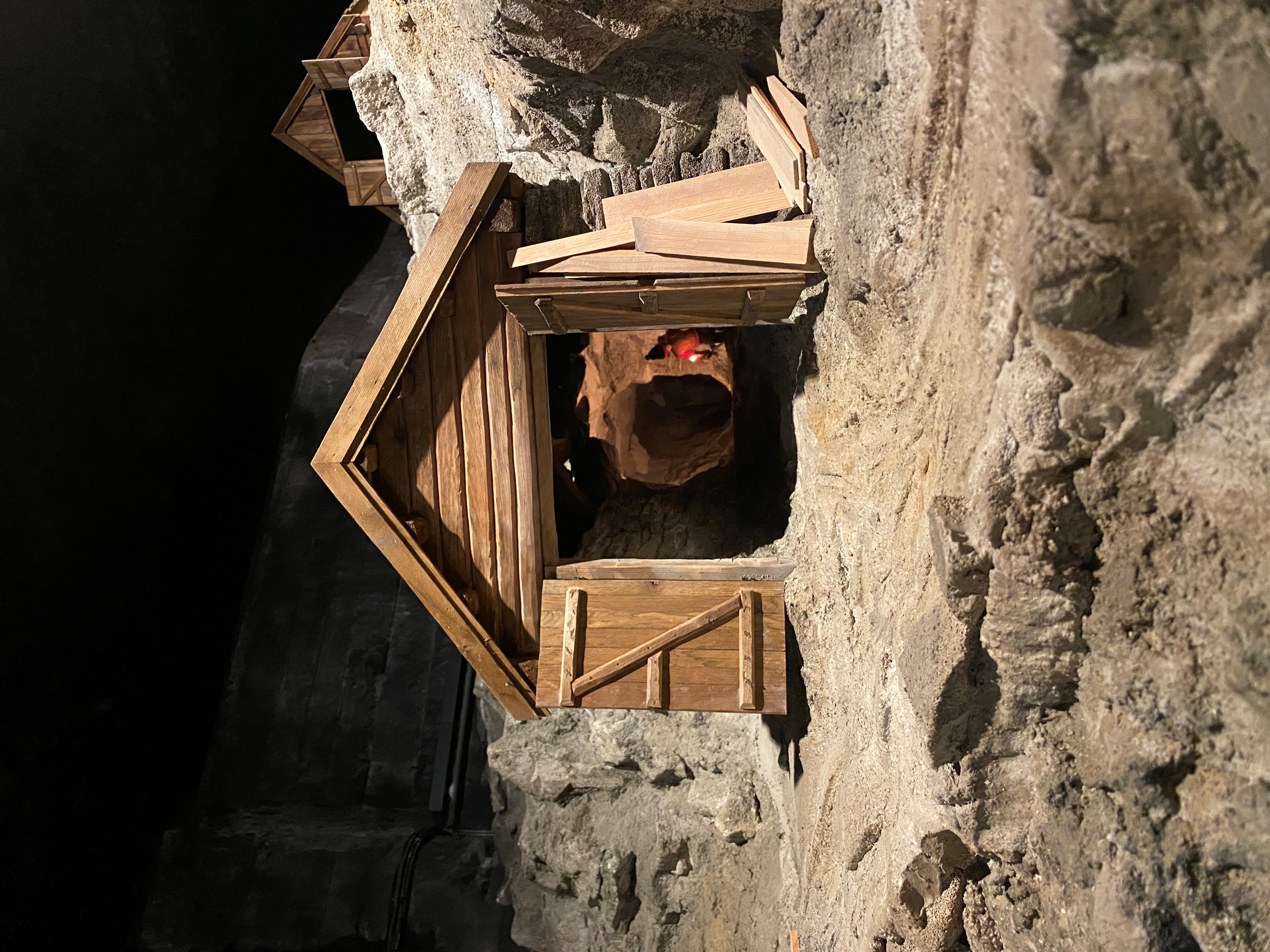
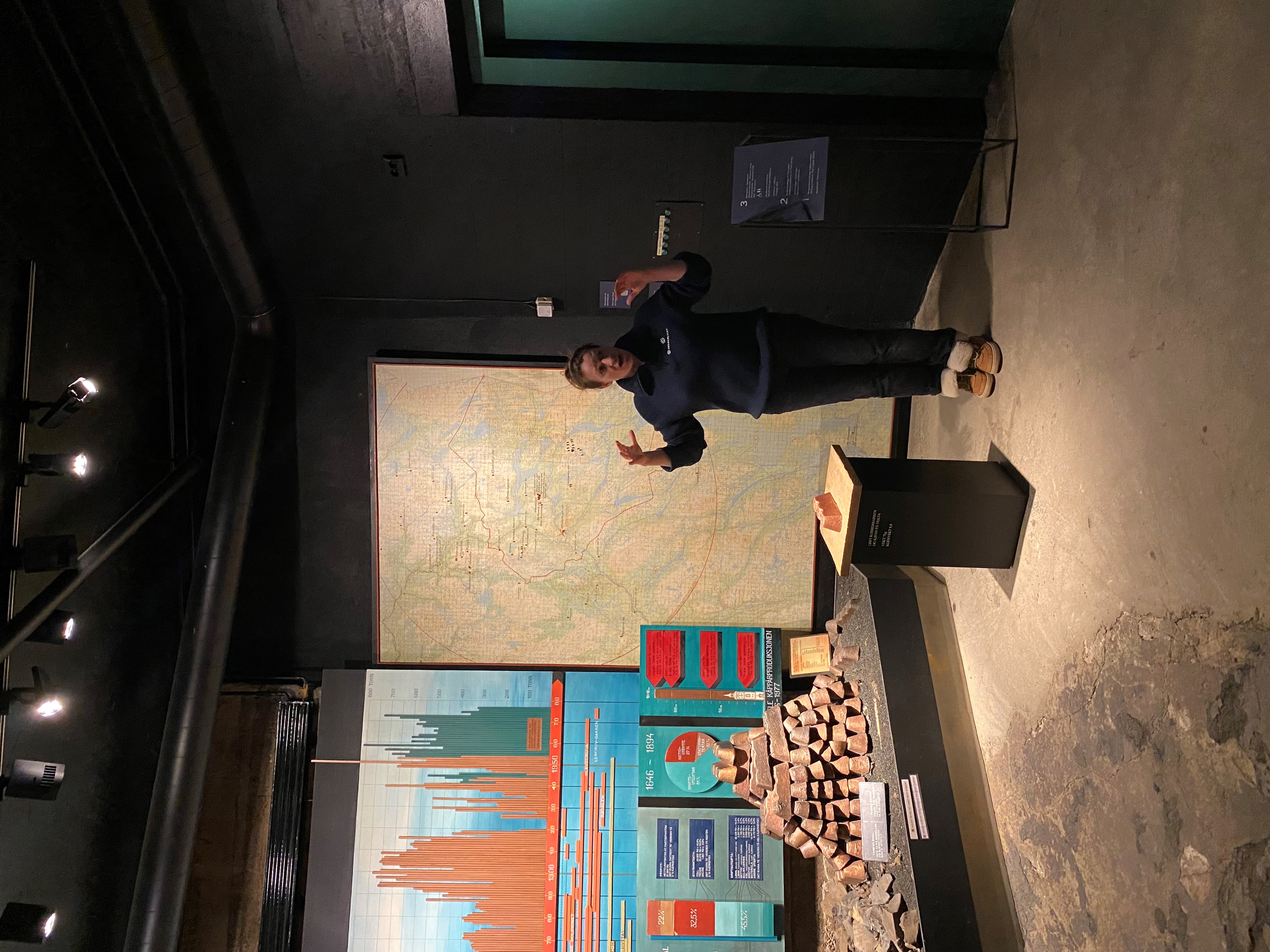
The Norwegian team had put together a great programme and made the good initiative to invite more participants to the conference this time, which broadened the contact network in a really good way. To get the whole picture, so to speak, of the World Heritage site Röros Mining Town & the Circumference the conference opened with the history presentet by the World Heritage coordinator Odd Sletten and the director of the Röros Museum Tone Rygg. As Tone so well said; Røros museum is a relatively large knowledge institution in a small society. Röros has just under 4000 inhabitants, still the museum is a central part in the town and have 28 permanent staff , 8 visitor arenas and aprox 60 000 visitors a year. Röros vas inscribed on the World Heritage list 1980.
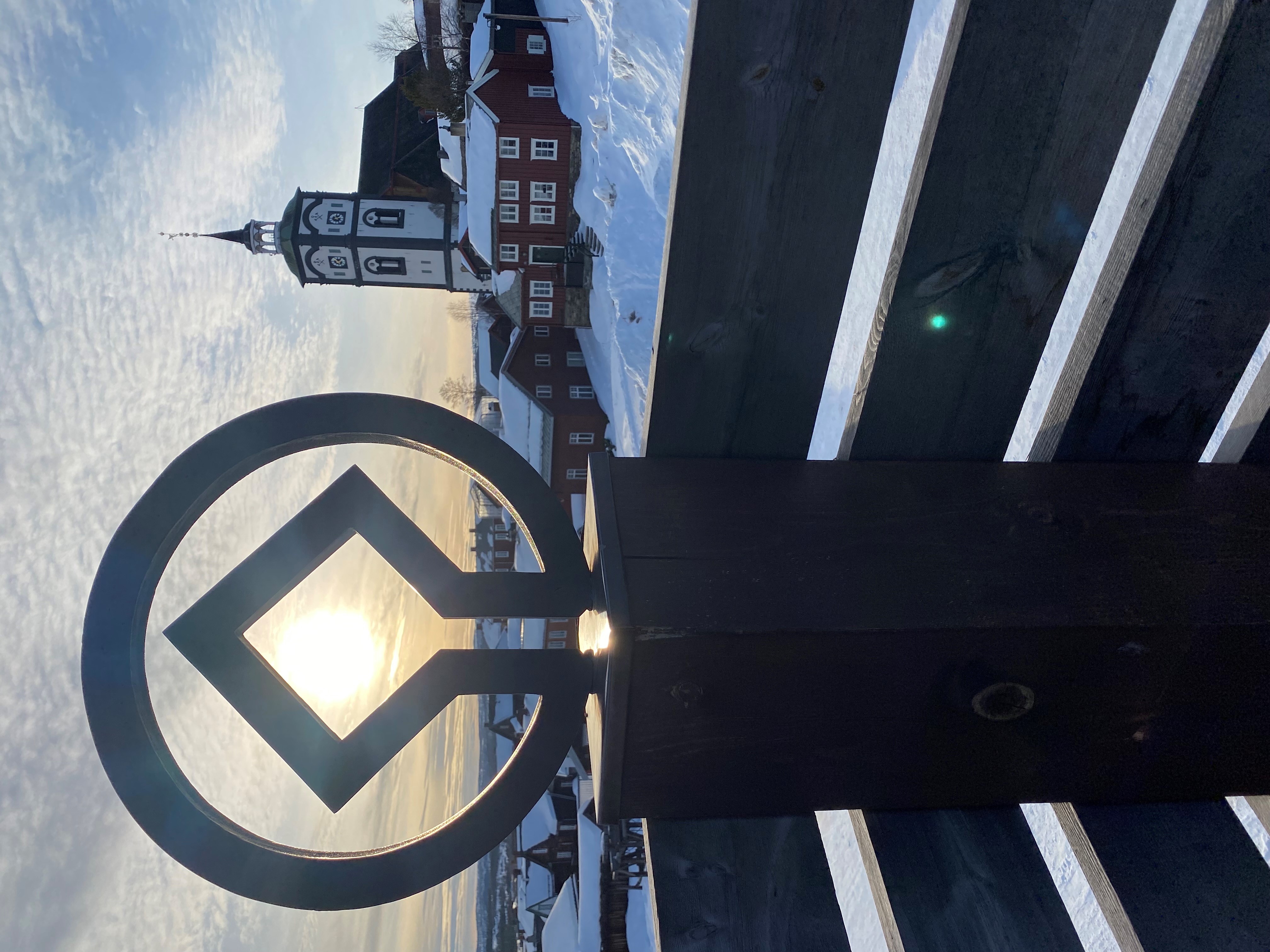
Tidvis www.tidvis.no
After a short presentation of the site members in the network Ragnhild Hutchison, historian and director of Tidvis. Tidvis is a non-profit company that explores and develops new ways of communicating and making research available, with a focus on history. The aim is to use both well-known and new tools and technologies. Examples of such are databases, games, 3D models, augmented and virtual reality, animations, interactive sensory experiences and good, flexible design on all surfaces.
It was actually so great to see and listen how Tidvis works from very large VR-projects to small moore tactile once. The example from an elderly home with a tiny memory box was incredibly touching. As for the time machine for children an families.
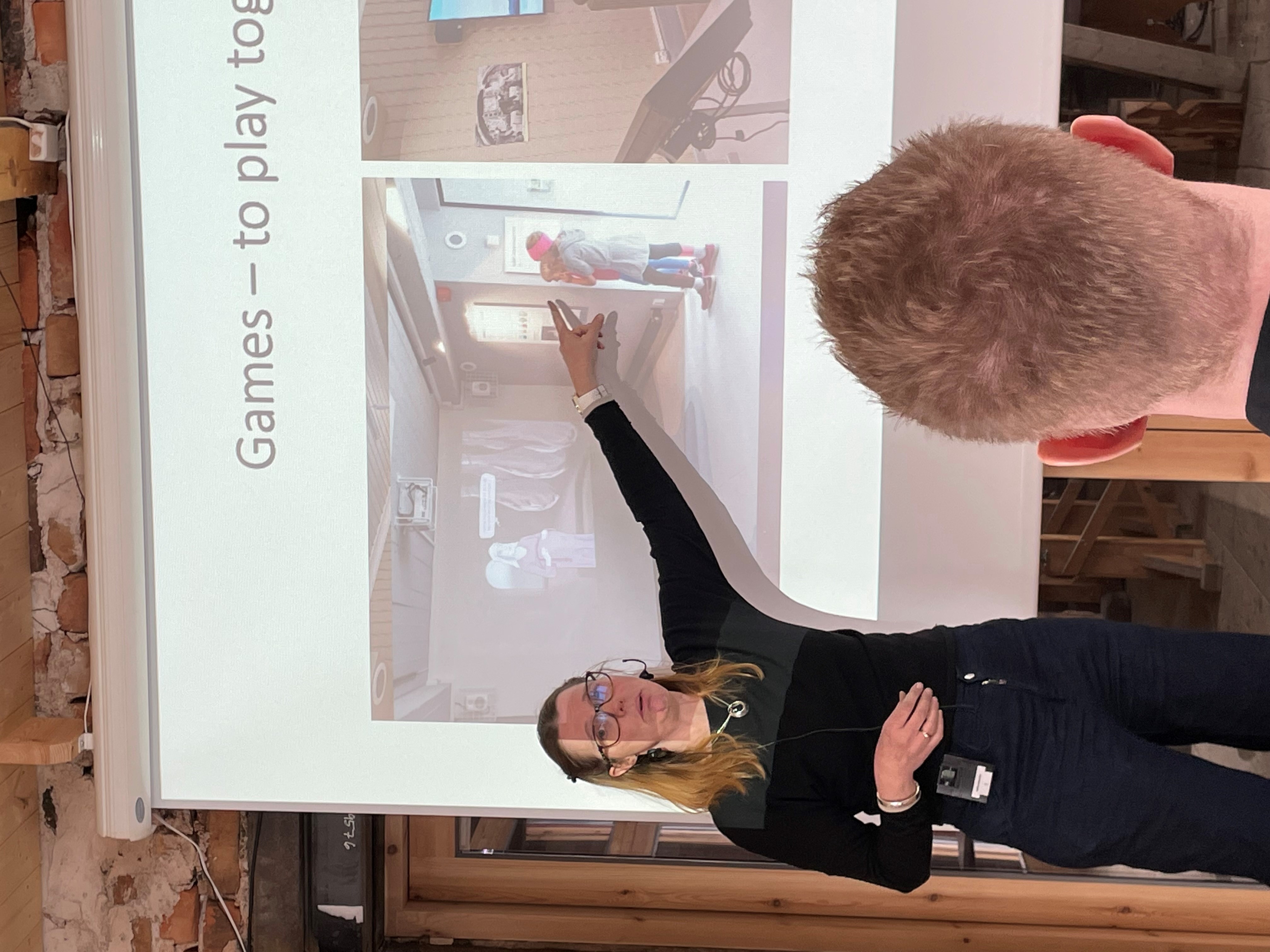
At the end; the learning issues from Ragnhild was:
- Find the story
- Think about the story for at least two weeks
(Do you still believe that this is the most important story in the world?)
- Then - and only then - start thinking about the tools you may use to tell the story.
- Nothing beats physical! If you have it – flaunt it! Digital is for when you don´t have it…
- Know your details and consider practical aspects of all things technical
- Make a small prototype - and test it
- Content is king! Content is king! Content is King!
Useful links:
- Ein bit av historia: https://tidvis.no/
- Oslo havn 1798: https://oslohavn1798.no/
- Time machine: https://www.tidvis.no/tidsmaskin
- Digitale Tautra: https://digitaletautra.no/
- Miniutstilling: https://www.miniutstilling.no/
- The Widows Boutique: https://widowsboutique.com/
The Falstad center www.falstadsenteret.no
Falstad was a German concentration camp in Norway during the German occupation 1940-1945. Originally, Falstad was actually a boarding school, but in August 1941, the SS took over the area and turned it to a concentration camp, administered by the Gestapo mainly used for transit for political prisoners from 13 different countries. Aprox 5000 prisoners spent time in Falstad, waiting for transportation to Germany or the concentration camp in Grini. From 1943 to 1945, at least 43 Norwegians, 101 Russians and 62 Serbs were executed in the forest next to the camp. The search for buried victims in the forest has not yet ended, the remains of more than 200 murdered people have been found so far. The prisoners in Falstad were liberated in May 1945, and the camp was converted into a labor camp for traitors. Falstad, so to say, turned the other way around. And later again it turned in to a a public elementary school for the disabled. It was a boarding school for children from all over the country.
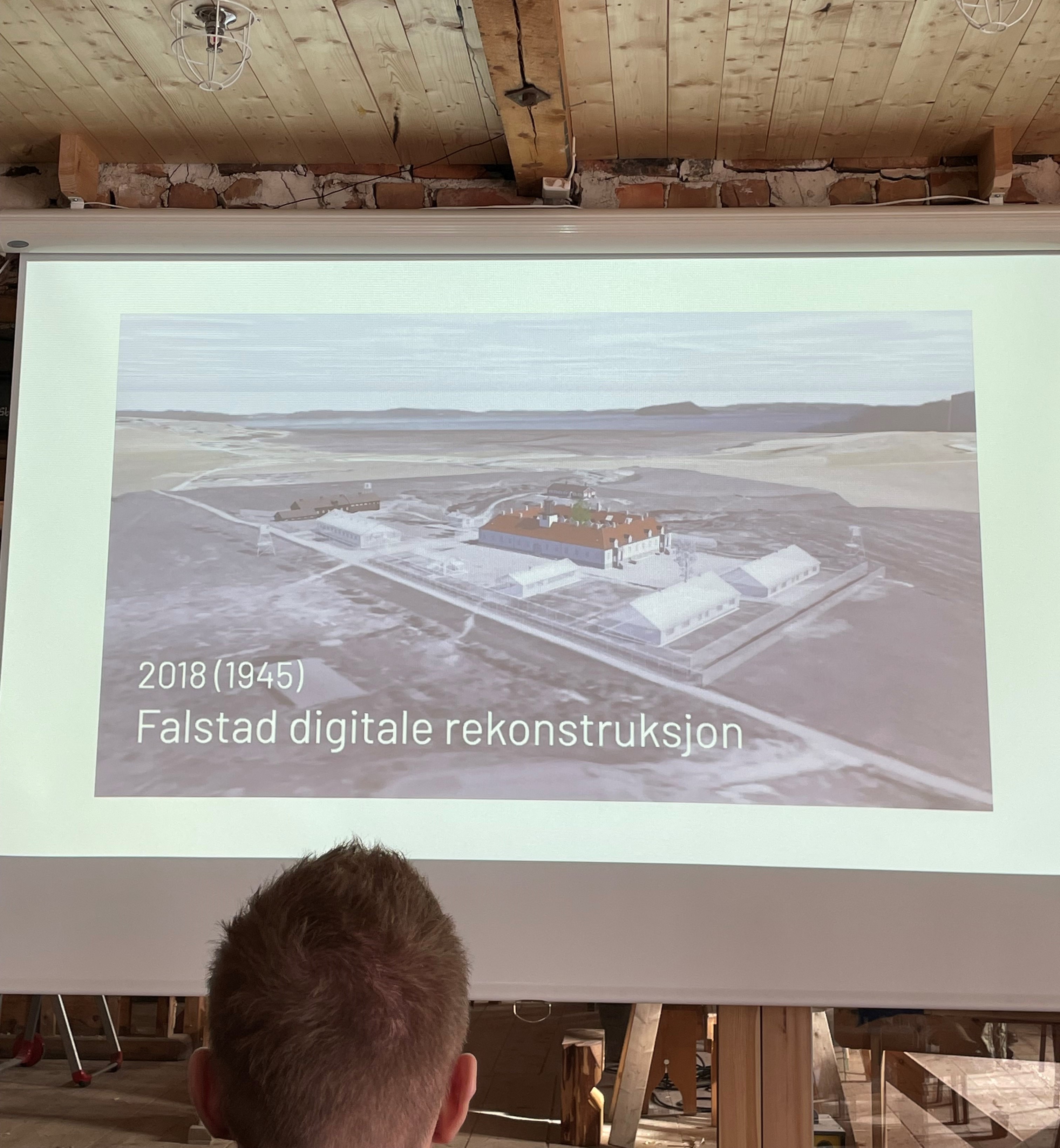
Today the camp is a museum. A memorial and human rights center. At the conference the historian and head of research Ingeborg Hjort, told the moving story of the place which is very difficult and complicated to deal with considering all the cruelty that happened during world war two. So, the museum has used new technology to be able to broaden the story of Falstad in different ways. The area is now a quiet place, but memories of the concentration camp are still there. And should be.
The challenge has been to make the experience part of history, but at the same time interactive and attractive for young people in particular. So how do you make an experience attractive in an old consentration camp? Can you, for example, laugh when you walk through? In Falstad, they used AR and wisely made an investigation into how the experience was received, which was instructive both for the creators and for the future to come.
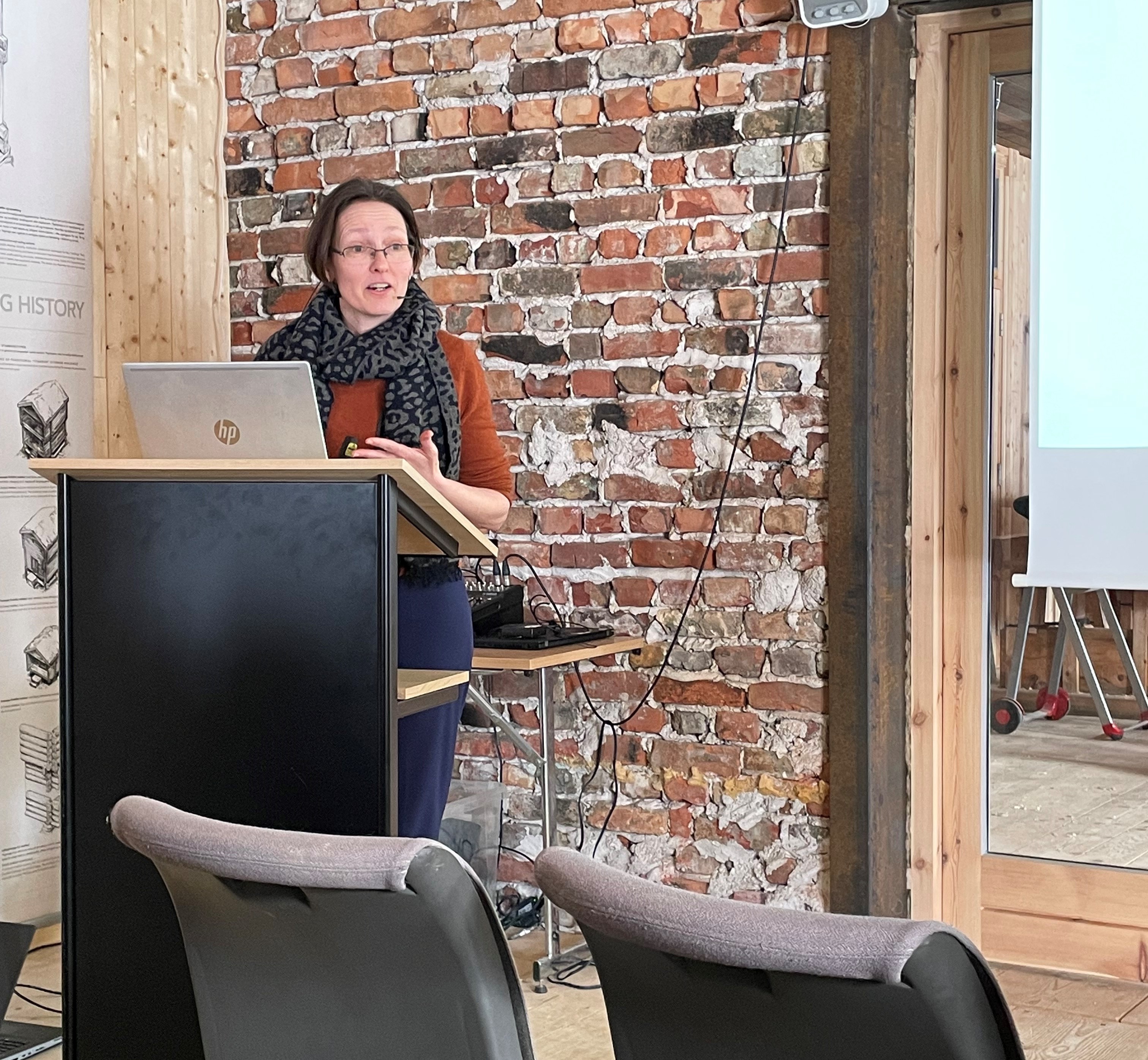
Svea on Svalbard – The art of live happily ever after www.niku.no
Living in Svalbard during the winter can be tough. No sun in sight for at least four months. On the other hand, during the summer months it lights up 24/7 for the same amount of time... Mining was carried out here for many years in the mining community of Svea. For a period Svea was the largest of four coal mines on Svalbard. But as recently as 2017, the decision was made to shut it down, and as if that was not enough, the traces of Svea were also to be svept away to be part of nature again.
At the same time, Svea is of course seen a cultural heritage. So how do you preserve an interesting historical community and at the same time remove it? The buildings must be demolished, as well as roads and the airport. A gigantic project that will cost enormous money. The demolition alone is estimated to cost around 2.5 billion norwegian kronor. But before, everything must be documented and, luckily, digitized, an assignment that has gone to NIKU (Norwegian Institute for Cultural Heritage Research).
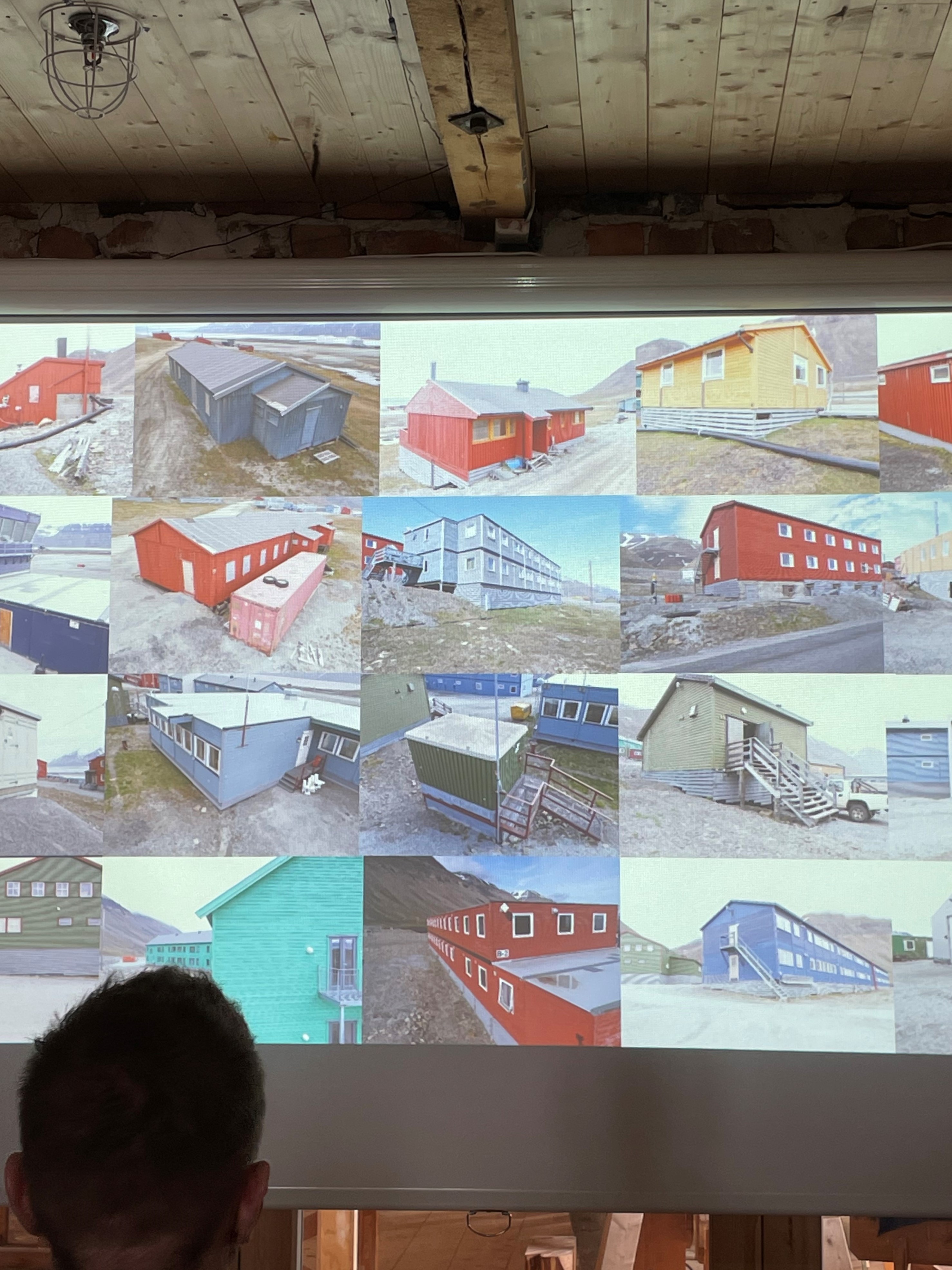
The mission has taken NIKU to a long, exciting and hard working project. To the VR-conference the archaeologist and researcher Erich Nau told the fascinating story of how not only document Svea digitalt but also how to tell the story. To document and digilalize the area as well as every building take years and the assignment requires a large dose of patience. But the result is beautiful in the way that the village of Svea still remains allthough it has gone back to dust.
VRINN www.vrinn.no
The last speaker for the day was cluster manager Keith Mellingen from VRINN Immersive Learning Cluster. An organisation who works hard for networking and participation in the industry that works with virtual reality and other immersive media. It is pretty amazing that VRINN succeeded in gathering so many stakeholders. It tells us that the VR industry engages many people today. Every year, in november, VRINN organizes the big conference Nordic VR Forum. Nordic VR Forum - YouTube
VR seminar workshop: Cold Part
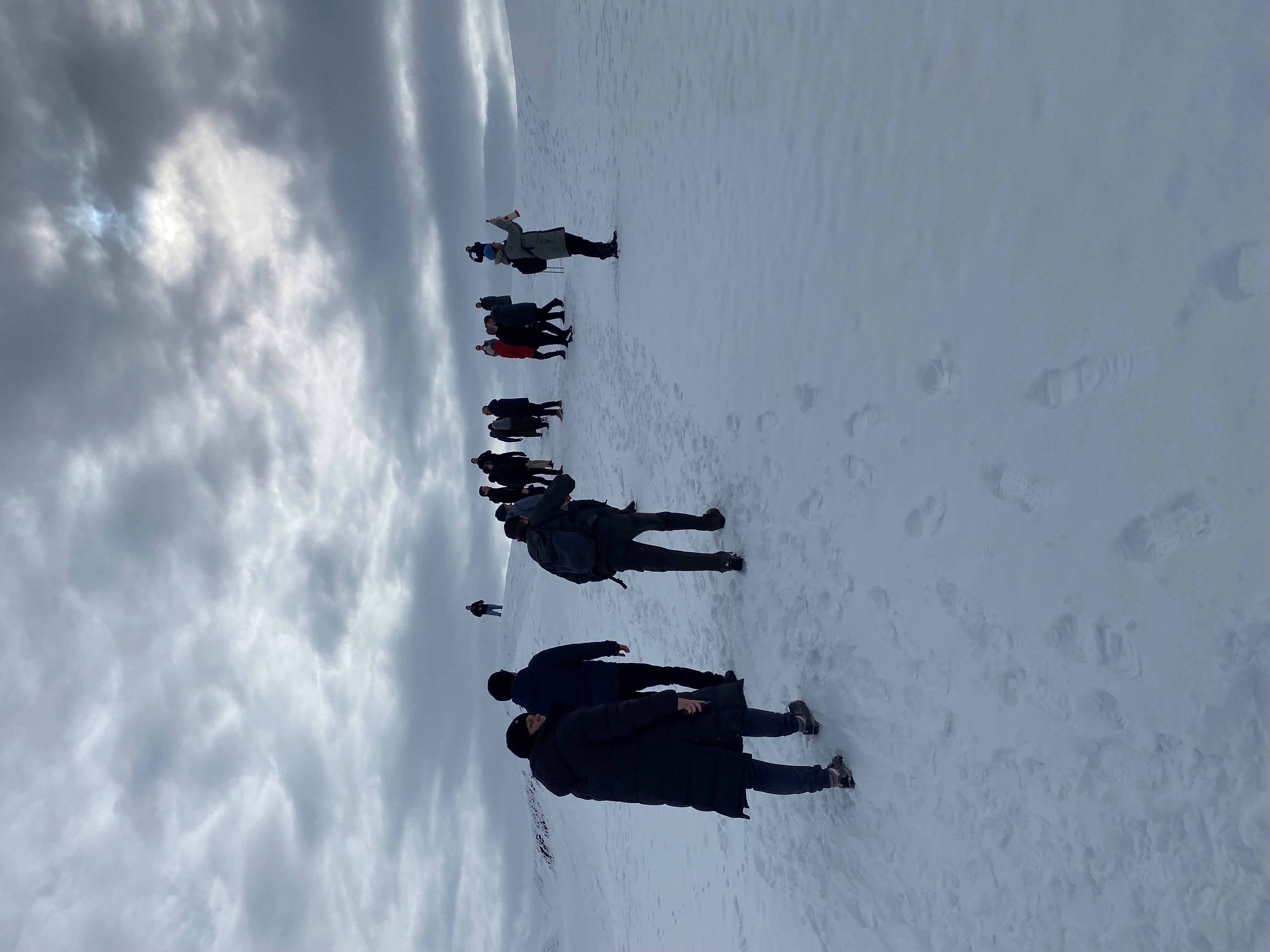
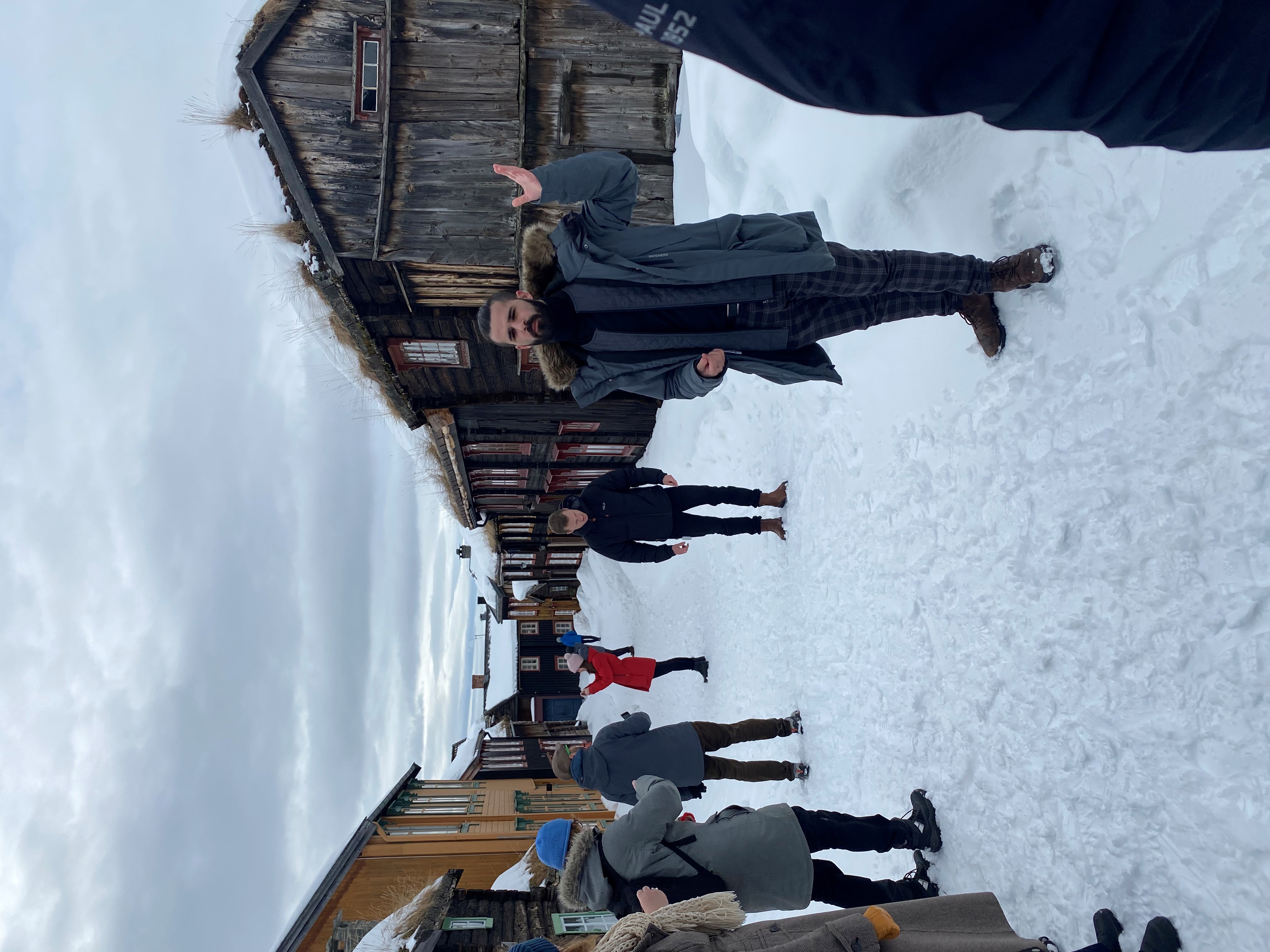
The guided tour that took place after the speakers was an interesting and well educating walk for the conference members. The excellent guides from the museum really made us understand Röros and how the small town grown and developed for a long period of time.
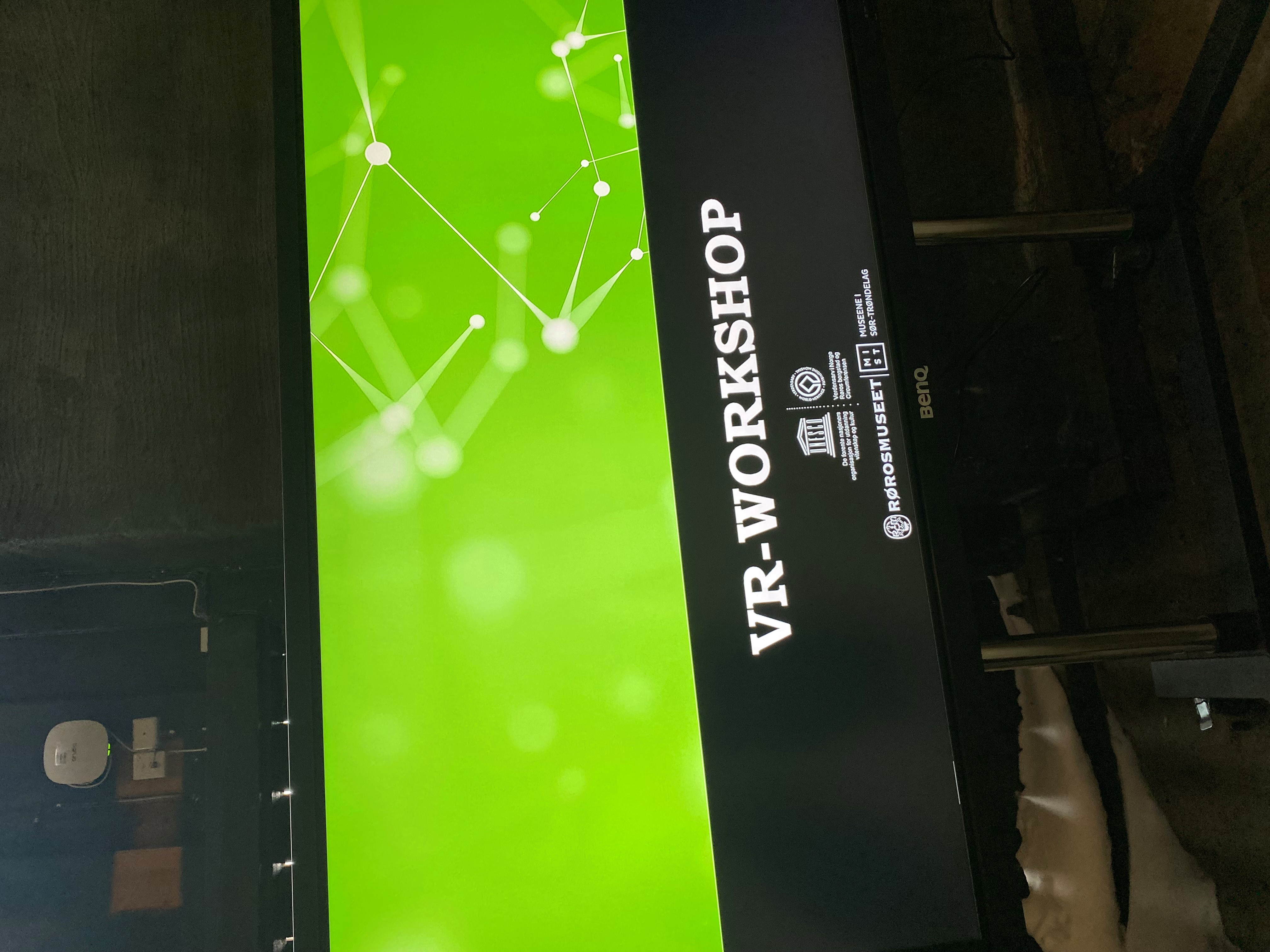
And it was also useful for the big workshop that would take up the rest of the day. The big task was to workshop with the central question; how to ”dress” the extraordinary and fantastic large and super cold room with a new exhibition. The conference members were split up in several differnt groups and got one hour (!) to come up with ideas. And ideas there were plenty of.
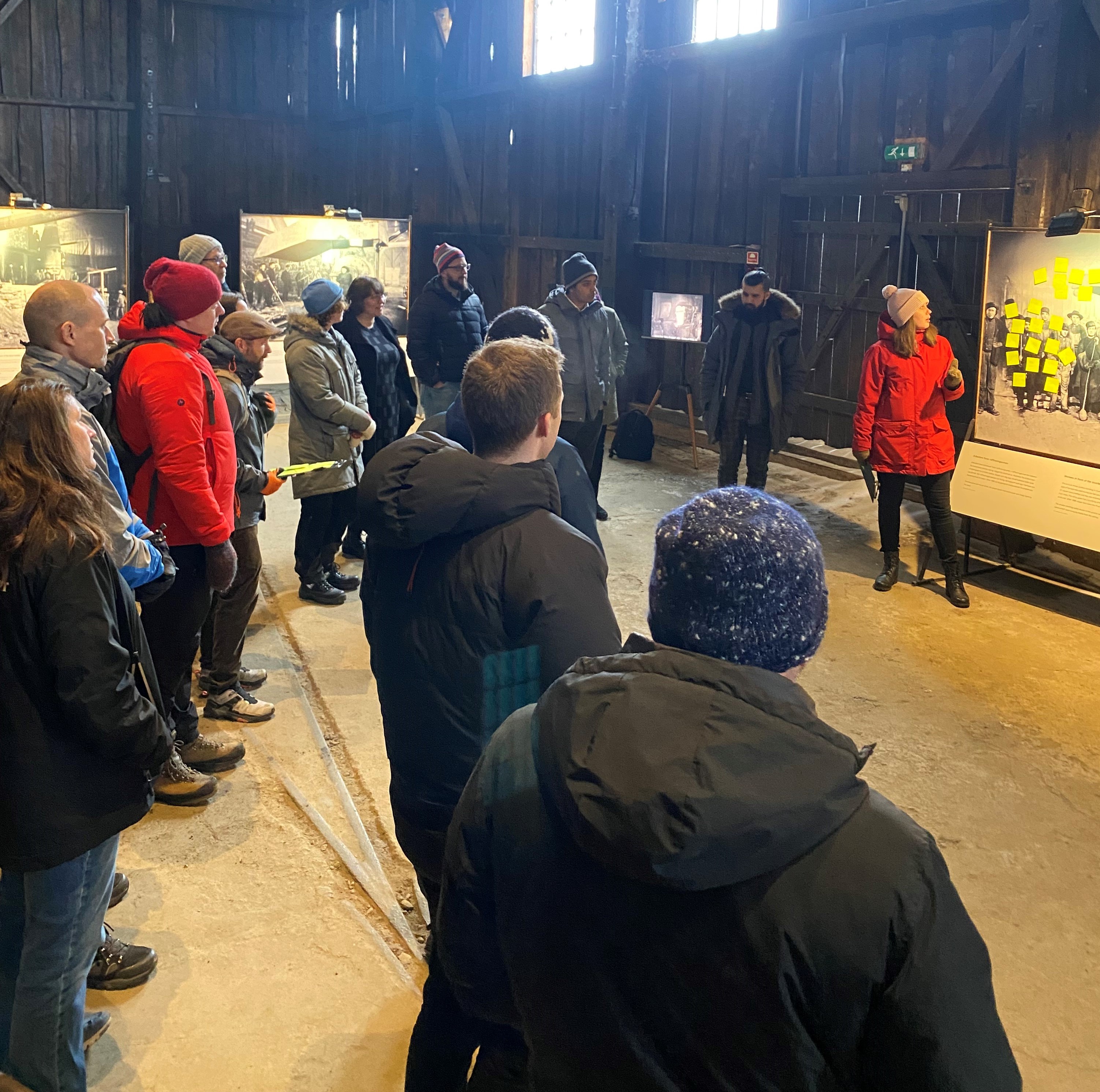
Here is the summary of input for the development of the cold section.
Generally
- The main task of the museum is to find what kind of stories the cold section could tell.
- The smelting process is uninteresting and generic - rather tell what it was like to work there!
- The cold part calls for a large and impressive REAL exhibition - not a digital presentation!
- Have a section on child labour. Have a corner for children. Put children to work!
- Several agreed that an entrance down in the cold part would be best and most logical. Then the audience gets a view of the cold part as they go higher. Exit through the museum shop is a matter of course.
- For God's sake, don't clean up the ruins. Leave the dirt and dust behind.
- The cold part has the potential to give the audience an overwhelming experience.
- It is important to make full use of the room, the size of the room is phenomenal.
- Bring out the hard working in the smelter: the heat and the noise.
- Again - it is important that the cold part conveys physical elements, that it is a REAL exhibition - do not focus on digital communication!!
- Use the wall to project graphics, mapping and information
- Let the audience smell, lift and carry coal.
- Let the audience load baskets with coal or lift coal into a melting pot.
- Let children use the rail, slag pots and move slag from A to B
Senses
- Several suggested the importance of including the senses in the exhibition
- Smell of sulfur oxide
- The heat from the ovens (can the audience go near an oven to feel the heat?)
- The cold when there was no fire in the smelter
- Weight and scent of coal, iron and copper
- Lots of noise - from the cabin river, from the melting areas, from the machinery
- Intense lighting – bring forth flames, glowing copper, etc.
- How dirty can you get from working with roasting, coal, slag, smelting, machinery?
Questions
- How are melters trained?
- Was there pride attached to working in the smelting hut?
- The four elements: air, fire, earth and water. How do they play together in the smelting hut?
- Did the workers shout at each other to communicate? Did they scream in pain?
- What accidents could happen in the smelting hut? (Fall down and row break in the cabin wheel)
- How to create wonder and curiosity in the hidden rooms and hatches in the cold section? Lighting?
- Crisis situations? Explosions? Evacuation?
- Payment?
Game suggestions
- Scoreboard with ranking of the top scoring families
- Multiple choice game
- Touchscreen mini-game with, for example, the slag track and fuel for the roasting and melting process.
- Well, a profession connected to the smelting hut. Go through the training for the profession.
- Leveling in the game: Upgrade to bessemer melting (drastically reduce the melting time), and upgrade so you can extract more copper from the mine.
- Play about the supply and flow of fuel - avoid the melting hut catching fire!
- Game about mining with a competitive element, who mines the best, and most environmentally friendly(!) - opportunity to mine greedily but thus not sustainably and creates dissatisfaction in the local community
Ideas
- Load coal into the melting furnace - make sure it is at the right temperature, not too cold or too hot
- Collaborative task: one person looks into a peephole of a converter, another checks the right amount of air flow
- Pour the liquid copper into the mold (?)
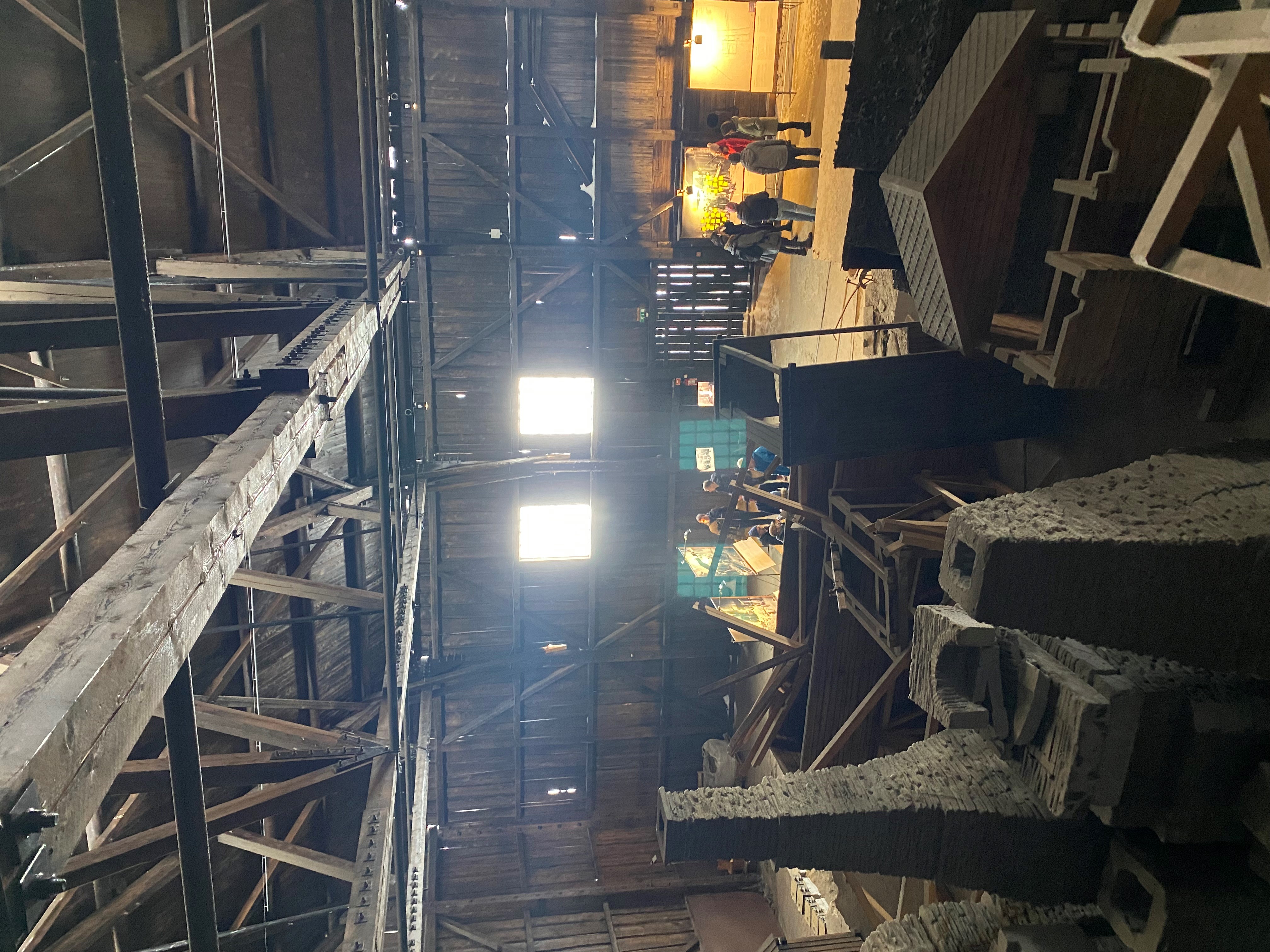
Other
- Show the facade of the melting furnace and the converter and what the cold part looked like.
- Peppers' Ghost illusion throughout the entire upper walkway
- 3D projections in the cold section: The whole room darkens every 20 min., a curtain is pulled over and a large projection begins, the room smokes, dramatic arrangement!
- Screens that can be pressed along a conveyor belt that runs through the cold section. The different stations tell about different parts of the work in the smelting hut.
- VR visit to the mine.
- Show the entire process in VR: from felling, lighting, extraction and shipping to weighing, roasting, smelting and export of copper
Symbol and brand for Smeltytta and the cold part:
- Copper bar / Copper bar
- Jernsu / Iron bear
- Can, for example, be sold as key rings. Possibly you can get one or the other depending on whether you had a successful melting process (in the game).
We thank the Norwegian team for a great visit in Röros!
